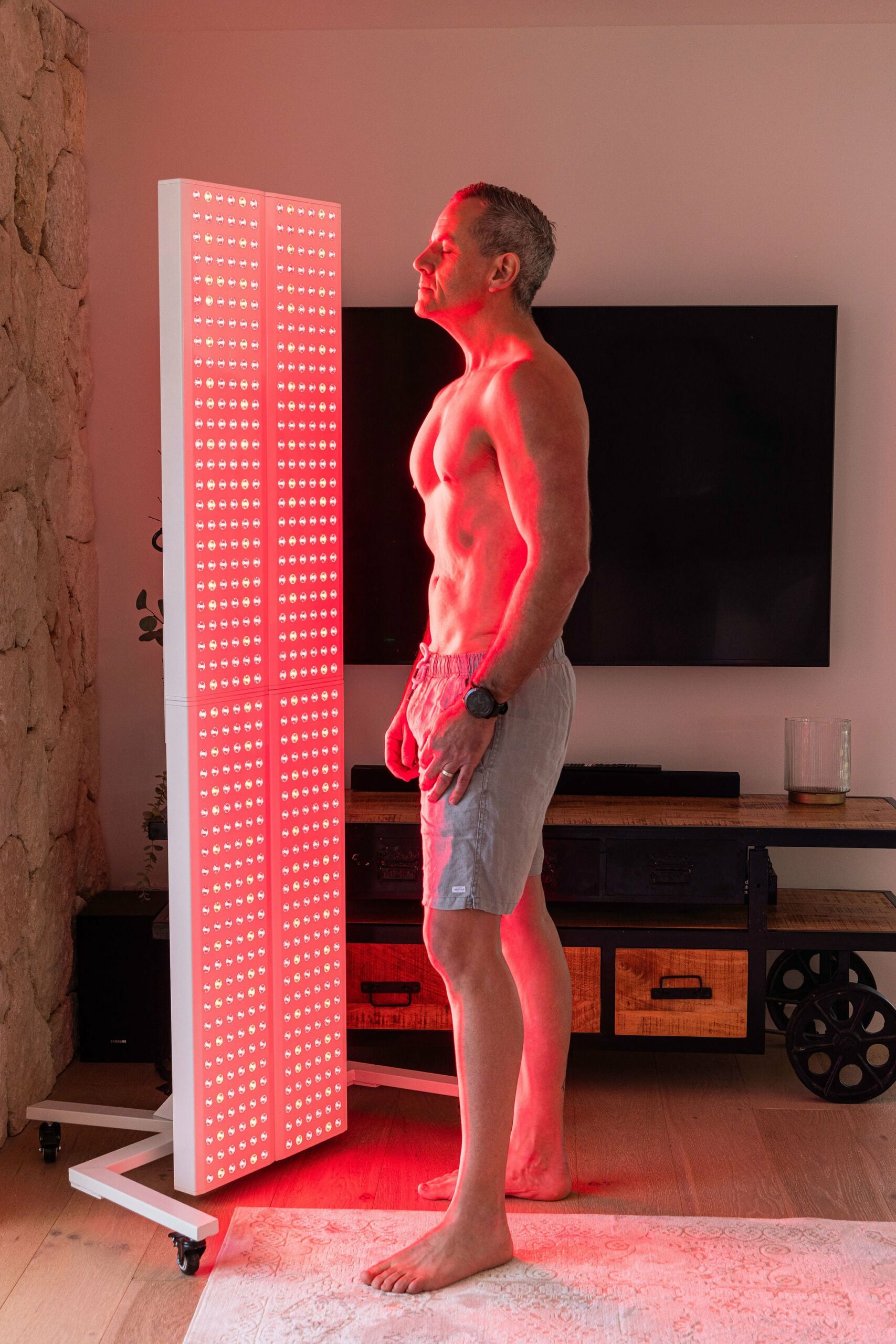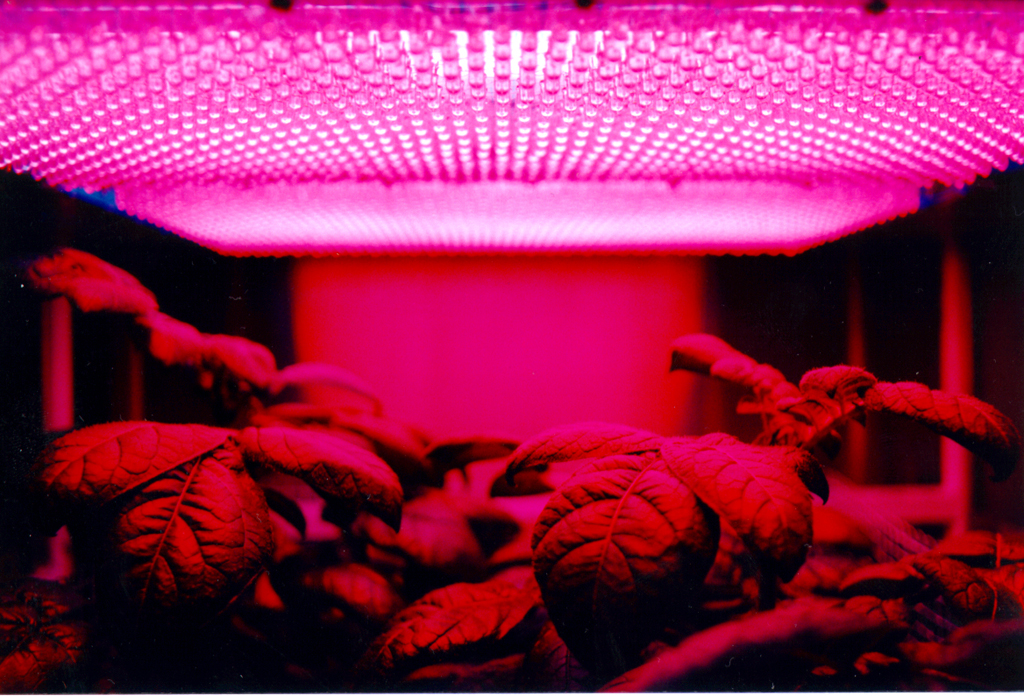What is FlexBeam?
Recharge Health marks a significant step forward in the realm of wellness with their FlexBeam device, a foray into the increasingly popular field of red light therapy. Eschewing traditional pharmaceutical approaches, the FlexBeam offers a non-invasive alternative that has garnered attention for its ease of use and effectiveness in home-based therapy.
Technical Advancements in Red Light Therapy
FlexBeam's technology integrates red and near-infrared light, operating at specific wavelengths (630nm and 815nm) to potentially provide synergistic health benefits. This method, known as Photobiomodulation (PBM), has been explored in medical research as a way to energize cellular mitochondria, potentially enhancing the body's natural recovery processes. The key outcomes of this technology could include:
- Increased cellular energy, potentially aiding in muscle recovery and overall vitality.
- Possible relief from pain and reduction in inflammation.
- Support in healing injuries and improving post-exercise recovery.
- Contributions to better sleep quality and mental health.
FlexBeam is designed with user experience in mind:
- It includes pulsation settings to potentially optimize treatment effectiveness.
- A high output of up to 100MW per cm² aims to ensure a potent dose of therapeutic light.
- Three preset programs allow users to customize the depth of treatment.
- Automatic 10-minute sessions with a built-in shut-off feature add to its convenience.
- Built-in cooling fans enhance the device's longevity and safety.
- The absence of electromagnetic field radiation makes it a safer option for regular use.
- A durable battery supports up to five sessions on a single charge, enhancing its portability.
User-Friendly and Safe for Home Use
Recharge Health has focused on making the FlexBeam accessible and safe for a wide range of users. The device's design caters to at-home therapy, allowing individuals and families, including pets, to experience the potential benefits of red light therapy in the comfort of their homes. The goal was to create a tool that provides minimal side effects and supports the body's natural healing abilities.
The development of the FlexBeam was guided by a comprehensive review of existing research on near-infrared therapy, ensuring that the device aligns with current scientific understanding. Endorsed by healthcare professionals like Dr. Ara Suppiah, the FlexBeam is recognized for its potential to enhance muscle cell energy, which is key to physical recovery and overall wellness.
By balancing technological innovation with user-centric design, the FlexBeam from Recharge Health presents a promising option for those exploring the benefits of red light therapy in a non-pharmaceutical, home-based setting.
Good For:
FlexBeam: How Does It Rate?
Pros
- Non-Invasive Treatment: Offers a gentle approach to skin and muscle recovery without invasive procedures.
- Safe Light Technology: Utilizes safe, UV-free red and near-infrared light, reducing the risk of side effects.
- Versatility: Effective for various conditions, including muscle recovery, skin rejuvenation, and pain relief.
- Easy to Use: Simple operation with user-friendly controls and automatic shut-off feature.
- Portable Design: Compact and flexible, making it easy to use on different parts of the body and convenient for travel.
- Clinically Supported: Backed by scientific research, indicating effectiveness in promoting cellular health and recovery.
- Suitable for Home Use: Designed for safe and effective use outside of a clinical setting, accessible for everyday consumers.
- Durable: Built to last with quality materials, ensuring long-term use and value for money.
- Peace of Mind: The device comes with a 5 years Warranty
Cons
- Initial Cost: The device may represent a significant upfront investment.
- Requires Consistent Use: Optimal results depend on regular and consistent use, which may be challenging for some users.
- Limited to Certain Conditions: While versatile, it may not be effective for all skin or muscle-related issues.
- Battery Dependency: Regular charging is necessary to maintain usage, which could be inconvenient at times.
- Learning Curve: Some users might need time to understand the best ways to utilize the device for their specific needs.
About the Brand
Established in 2019, Recharge Health is a Norwegian company that has quickly emerged as a leader in health technology. Their pioneering product, the FlexBeam, is a testament to their commitment to innovation. This device harnesses the power of targeted red light therapy, offering a non-pharmaceutical and non-invasive approach to health and recovery, already benefiting thousands.
Driven by the mission to empower self-healing and enhance life quality, Recharge Health focuses on creating products that make a real difference. The FlexBeam, developed in-house, reflects their dedication to premium quality as an ISO 13485 certified medical device company.
Prioritizing direct sourcing and minimizing third-party factory dependence, they ensure top-notch quality by assembling the FlexBeam at the German-owned BlueChips electronics manufacturer in Chiang Mai, Thailand. This strategic approach underlines their commitment to delivering exceptional and effective health solutions.
What Are Health Benefits of Flexbeam and How Does it Work?
The FlexBeam from Recharge Health is a pioneering device in the field of red light therapy, designed to offer several health benefits through a scientifically-backed approach.
Health Benefits and Working Mechanism of FlexBeam
Red light therapy, the core technology behind FlexBeam, involves exposing the skin to low levels of red and near-infrared light. The primary function of this therapy is to stimulate mitochondria, the energy powerhouses within cells, thus enhancing the production of adenosine triphosphate (ATP). ATP is vital for numerous cellular processes, including those related to healing and recovery.
The effectiveness of red light therapy is dependent on the wavelength and duration of exposure. FlexBeam utilizes specific wavelengths of 630nm (red) and 815nm (near-infrared), which are believed to synergize for improved health outcomes. These wavelengths have been found to penetrate the skin and tissue, reaching the mitochondria to stimulate energy production within the cells.
Health benefits associated with the FlexBeam include:
- Pain Relief: Beneficial for athletes and those with chronic pain, red light therapy can reduce muscle soreness and alleviate pain, as discussed in studies like the one published in the “Laser Therapy Journal” by John Foley et al.
- Muscle Tissue Repair: Research, such as the work by Maria Emilia de Abreu Chaves et al in “Anais Braseleiros de Dermatologia,” supports that specific red light wavelengths can aid in muscle repair and wound healing by increasing collagen production and decreasing inflammation.
- Improved Recovery: Red light therapy is also known for enhancing recovery processes, particularly post-exercise, by stimulating cell regeneration and increasing blood circulation.
What do scientific research or experts in the field say?
Experts in the field have endorsed the benefits of red light therapy. Cleber Ferraresil, an expert and researcher in Exercise Physiology, emphasizes that near-infrared and red light therapy can help regenerate and heal damaged tissue. Post-exercise application, in particular, can improve performance and decrease oxidative stress and inflammation in muscles.
In their research published in the “International Journal of Medical Sciences,” Qin Zhu and colleagues discussed how near-infrared red light, like that used in devices such as the FlexBeam, can enhance the activity of an enzyme called cytochrome c oxidase. This enzyme plays a crucial role in the cells' energy production processes. By boosting its activity, near-infrared red light aids in enhancing various biochemical reactions within the body.
One significant effect of this stimulation is the increased activity of enzymes like superoxide dismutase and cytochrome oxidase. These enzymes are vital antioxidants that protect the body’s cells from damage caused by harmful molecules known as free radicals. The increase in these enzymes' activities helps in reducing oxidative stress, which is linked to various health problems and aging.
In simpler terms, the exposure to near-infrared red light from devices like the FlexBeam can help improve the body's natural antioxidant defenses and metabolism. This, in turn, contributes to overall health by protecting cells, reducing the risk of damage and disease, and promoting efficient energy use within the body.
The practical application of red light therapy was notably seen in the 2016 Rio Olympics, where the U.S. track team used these devices for recovery and training enhancement. Coach Alberto Salazar recognized the balance that red light therapy creates between performance and recovery.
In conclusion, the FlexBeam by Recharge Health harnesses the potential of red and near-infrared light therapy to offer significant health benefits, particularly in pain relief, muscle tissue repair, and overall recovery enhancement. Supported by scientific research and expert opinions, it stands out as a valuable tool in both therapeutic and athletic contexts.
For alternative devices that can help with pain, inflammation and tissue repair please also see the section of our Website dedicated to Red Light Therapy Devices for Pain Relief and the section for Red Light Therapy for general Wellbeing . We have also reviewed several Red Light Therapy Brands many of which manufacture versatile products able to address a range of concerns and suitable to treat individual areas to the full body such as Mito Red Light
Quick Facts & Features
| Brand | Recharge Health |
|---|---|
| Product | Flexbeam |
| Form | Red Light Therapy Belt |
| Specification | 3 light pods, 2 infrared+ 1 red LEDS in each pod / 113mW/cm²IR, 57mW/cm² red |
| Wavelength | 800 – 850 nm for near-infrared and 625-635 nm for red |
| Safety | FDA approved |
| Age | Adults |
| Skin Type | All types |
| Benefit | Accelerating recovery, reducing pain and inflammation, relaxing muscles, repairing wounds and tissue, improving exercise performance, etc. |
| Price | $ 449 |
| Shipping | Worldwide shipping |
| Return Policy | 60 Days Money Back Guarantee |
| Warranty | 5 Year Warranty |
| Purchase | Official website |
How to Use It?
- Charge the Device: Make sure it’s fully charged for seamless use.
- Skin Preparation: Clean the target area for better light absorption.
- Setting Selection: Choose the setting that aligns with your therapy goals.
- Positioning: Place FlexBeam on the desired body part. Its flexible design conforms to various shapes.
- Start Treatment: Activate the device. Typical sessions are around 10 minutes, but adjust as needed.
- Relax: Stay comfortable during the treatment for the light to take effect.
- Post-Session Care: After use, turn off the device and wipe it with a soft cloth.
- Regular Usage: For noticeable results, use the FlexBeam consistently as part of your routine.
Always refer to the user manual for detailed instructions and safety guidelines
Safety
The FlexBeam is designed with safety in mind, using low-level, non-UV red and near-infrared light, minimizing the risk of harm. It avoids emitting excessive heat or electromagnetic radiation and features an automatic shut-off to prevent overuse.
Individuals who are pregnant, those with a history of light sensitivity or photo-reactive skin conditions, people currently using photosensitizing medications, and anyone with a history of cancer should consult with a healthcare professional before using red light therapy or the FlexBeam device.
Users should adhere to the guidelines in the user manual and consult healthcare professionals if necessary. Proper maintenance and usage are essential for ensuring its safe and effective operation.
Any Side Effects?
The FlexBeam's red light therapy is notably a safe technology and is typically free from side effects when used as directed. Its non-invasive approach and UV-free light ensure a high safety profile, making it a user-friendly option for most individuals.
Reviews From Users
We went through reviews posted on Trustpilot by verified purchasers of the product and it is clear that they overwhelmingly expressed satisfaction with the effectiveness of the product scoring an overall 4.7* rating out of 5 *. Below is a selection:
— Carolyn McCarthy – TH

— Chloe Hull– GB

— JBush -US

— Lisa Friesen, CA

Frequently Asked Questions
How often should I use the FlexBeam?
For the best results, it's recommended to use the FlexBeam consistently, ideally daily or as directed in the user manual.
Is the FlexBeam safe for all skin types?
Yes, the FlexBeam is designed to be safe for all skin types. However, individuals with specific skin conditions should consult a healthcare professional before use.
Can the FlexBeam be used to treat medical conditions?
While beneficial for general wellness and recovery, it's not a substitute for medical treatment. Consult a healthcare provider for medical conditions.
How long does each treatment session last?
Typically, each session lasts about 10 minutes, but this can vary based on the treatment area and user preference.
Will I feel heat or pain during the treatment?
The FlexBeam uses low-level light, so it doesn't generate significant heat or cause pain.
Is it suitable for use during pregnancy?
Pregnant women should consult with a healthcare professional before using the FlexBeam.
How do I know which setting to use on the FlexBeam?
Refer to the user manual for guidance on selecting the appropriate setting for your specific needs.
Is there a warranty on the FlexBeam?
Yes, Flexibeam comes with a 5 Years Warranty
Does the FlexBeam require any special maintenance?
Regularly wipe the device with a dry cloth and ensure it's stored in a cool, dry place. Follow any additional maintenance guidelines provided in the manual.
Can the FlexBeam be used on any part of the body?
Yes, it's designed to be flexible and can be used on various parts of the body, including the back, neck, shoulders, and legs.
Conclusion
In conclusion, the FlexBeam stands out as a versatile and user-friendly device in the realm of red light therapy. Its non-invasive approach, combined with the safety of UV-free light technology, makes it a suitable option for a variety of users seeking pain relief, muscle recovery, and skin rejuvenation.
While it requires a consistent routine and an initial investment, its portability, ease of use, and scientific backing present it as a valuable addition to anyone's wellness toolkit.
Of note is the built quality of the device and how Recharge Health stands behind its product offering an above average long Warranty period of 5 years on the device.
The FlexBeam is a testament to how modern technology can be harnessed for enhancing personal health and well-being.
Red light therapy is a type of therapy that uses red or near-infrared light to treat a variety of conditions. During a red light therapy session, a person is exposed to a specific wavelength of red or near-infrared light that is delivered through a light-emitting device. The light penetrates the skin and reaches the cells within the body with a range of therapeutic effects.

Red light is a type of visible light, Its wavelength falls between approximately 630 and 700 nanometers (nm) on the electromagnetic spectrum. Red light is often used in light therapy treatments for the skin, as it has been shown to have the most beneficial effects on skin cells and collagen production.
Near-infrared (NIR) light, on the other hand, has a longer wavelength than visible red light and falls between approximately 700 and 1200 nm on the electromagnetic spectrum. NIR light is not visible to the human eye, but it can penetrate deeper into the skin and other tissues than visible light, making it useful for a variety of therapeutic applications ranging from wound healing to inflammation reduction or improved circulation, among other benefits.
Different Red Light Therapy devices usually deliver slightly different wavelength ranges that research has shown to be the most effective for the concern they are being recommended for.
Red Light Therapy (RLT) strengthens the mitochondria, the cell’s powerhouse, where cell energy is created. Adenosine Triphosphate (ATP) is the critical energy-carrying molecule that is found in all living organisms. By optimizing the function of the mitochondria, more ATP is produced and with increased energy cells can function optimally.
This scientific breakthrough resulted in scientists discovering Red Light Therapy’s ability to stimulate and speed up tissue repair and growth. Red Light Therapy is now widely used for maintaining a healthy complexion, speeding up muscle recovery, reducing inflammation, improving sleep, treating neurological conditions, balancing hormones, treating pain, and even losing weight.
Research has also indicated that Red Light Therapy can help to restore cellular balance and alleviate the negative impact of blue light exposure. The prevalence of blue light in our society has become a growing concern as many individuals spend prolonged periods of time looking at screens on a daily basis.
Red Light Therapy (RLT) is also called:

Low-Level Light Therapy (LLLT), Photobiomodulation (PBM), Cold Laser Therapy, Photonic Stimulation, Low-Power Laser Therapy (LPLT), Phototherapy
A Brief History of Red Light Therapy
The journey of Red Light Therapy (RLT) has been both fascinating and impactful, starting from its humble origins in the late 19th century. Dr. Niels Ryberg Finsen, the pioneer in light therapy, made a groundbreaking discovery in 1896 that light could be harnessed to treat Lupus Vulgaris, a form of tuberculosis affecting the skin. His work, which led to the tangible healing of skin lesions, was so revolutionary that he received the Nobel Prize in Physiology in 1903.
Fast forward to 1960, Theodore H. Maiman invented the first operational laser, fulfilling Albert Einstein's theories on the principles of lasers laid out in 1917. This invention opened new avenues for RLT, allowing more precise applications.

NASA took an interest in Red Light Therapy in 1987, conducting experiments to examine its effects on plant growth in space missions. These studies hinted at RLT's potential to benefit not just human health but also broader ecological systems.
In the same vein, Endre Mester's work in 1967 set the stage for modern RLT applications.
His experimentation with low-level laser therapy on skin cancer effects demonstrated the technique's efficacy and led to FDA approval for wound healing in 2002.
The advent of LED technology in the 1990s was a game-changer, offering an efficient and cost-effective alternative to traditional light bulbs. This technological leap made light therapy more accessible to the general public, including its use in sports medicine where physical therapists reported quicker recovery times for sports-related injuries.

One of the most recent and exciting developments in RLT is its potential role in weight management. Studies indicate that Red Light Therapy can influence hormones like Leptin and Ghrelin, which play key roles in regulating appetite and metabolism. This makes RLT a promising avenue for non-invasive weight loss treatments.
As RLT continues to evolve, its applications keep expanding, crossing multiple disciplines from medicine to ecology. Researchers are continuously probing its potential, finding new ways to apply this age-old yet ever-advancing technology.
Our articles exclusively rely on primary sources of information, encompassing peer-reviewed medical journals and esteemed academic institutions.
- Dissecting The Regulation And Function Of ATP At The Single-Cell Level: https://www.ncbi.nlm.nih.gov/pmc/articles/PMC6310285/
- Infrared Therapy For Chronic Low Back Pain: A Randomized, Controlled Trial: https://www.ncbi.nlm.nih.gov/pmc/articles/PMC2539004/
- Light Therapy: The Effectiveness of Light Therapy on Pain and Swelling of Acute Lower Extremity Sprains and Strains of Collegiate Athletes: https://digitalcommons.cedarville.edu/cgi/viewcontent.cgi?article=1013&context=education_theses
- Red/Near Infrared Light Stimulates Release of an Endothelium Dependent Vasodilator and Rescues Vascular Dysfunction in a Diabetes Model: https://www.ncbi.nlm.nih.gov/pmc/articles/PMC5699925/
- Shining Light On The Head: Photobiomodulation For Brain Disorders: https://www.sciencedirect.com/science/article/pii/S2214647416300381
- A Systematic Review Of Low Level Laser Therapy With Location-Specific Doses For Pain From Chronic Joint Disorders: https://www.sciencedirect.com/science/article/pii/S0004951414601276
- The Use of Low Level Laser Therapy (LLLT) For Musculoskeletal Pain: https://www.ncbi.nlm.nih.gov/pmc/articles/PMC4743666/
- The Nuts and Bolts of Low-level Laser (Light) Therapy: https://www.ncbi.nlm.nih.gov/pmc/articles/PMC3288797/
- Effects of Light-Emitting Diode Therapy on Muscle Hypertrophy, Gene Expression, Performance, Damage, and Delayed-Onset Muscle Soreness: https://www.ncbi.nlm.nih.gov/pmc/articles/PMC5026559/
- Infrared therapy for chronic low back pain: A randomized, controlled trial
- A Randomized Comparative Study between High-Intensity and Low-Level Laser Therapy in the Treatment of Chronic Nonspecific Low Back Pain
- Effects of Light Therapy on Osteoarthritis and Its Sequelae in Aging and Older Adults: A Systematic Narrative Review
- The Use of Laser Therapy for Patients with Fibromyalgia: A Critical Literary Review
- Significant Improvements in Cognitive Performance Post-Transcranial, Red/Near-Infrared Light-Emitting Diode Treatments in Chronic, Mild Traumatic Brain Injury: Open-Protocol Study
- A randomised, placebo controlled trial of low level laser therapy for activated Achilles tendinitis with microdialysis measurement of peritendinous prostaglandin E2 concentrations
- Low level laser therapy (classes I, II and III) in the treatment of rheumatoid arthritis
- Low-Level Laser (Light) Therapy (LLLT) In Skin: Stimulating, Healing, Restoring
- Pain Relief and Healing With Laser Therapy
- Infrared Therapy For Chronic Low Back Pain: A Randomized, Controlled Trial
- Biological Effects And Medical Applications Of Infrared Radiation
- The Science Behind NMN–A Stable, Reliable NAD+Activator and Anti-Aging Molecule
- https://photobiomodulationstudio.uk/how-it-works
- The effectiveness of low-level diode laser therapy on orthodontic pain management: a systematic review and meta-analysis
- Effect of Low-level Laser Therapy on Postoperative Pain after Root Canal Retreatment: A Preliminary Placebo-controlled, Triple-blind, Randomized Clinical Trial
- Effect of Low-level Laser Therapy on Postoperative Pain in Molars with Symptomatic Apical Periodontitis: A Randomized Placebo-controlled Clinical Trial




